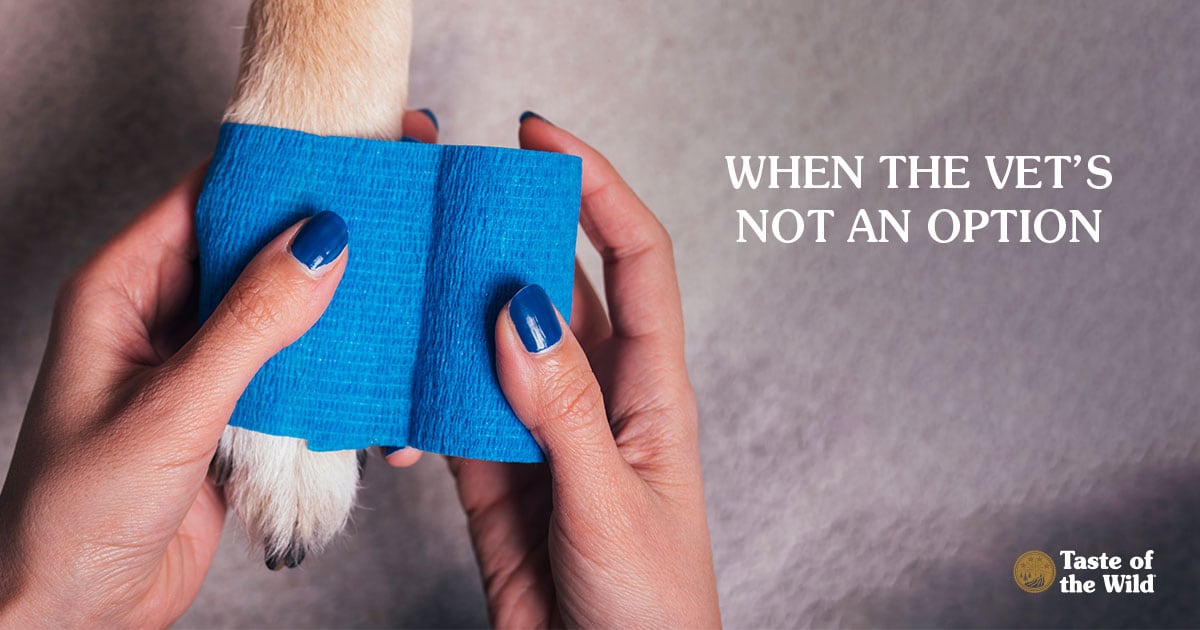
We know you probably love your veterinarian. But sometimes the pet doctor isn’t a possibility for non-emergency care. And who doesn’t like to save a buck on pet-related expenses? While there are plenty of procedures that are best left to the professionals, some simple pet care tasks can be done safely on your own, at little or no cost.
Checking vital signs. Suspect your pet is feeling under the weather? It’s easy to check a few simple health parameters at home. Using a rectal thermometer with a little petroleum jelly on the end, see if your dog or cat’s temperature is in the normal range, which is 100 to 102.5 degrees Fahrenheit.
To check the pulse, place your hand on the left side of your pet’s chest, just behind the front leg. Using a stopwatch, count the number of beats in a minute. For cats, a normal heart rate is between 140 to 220 beats per minute. At rest, dogs should have a pulse of 60 to 140 beats per minute, with large dogs on the lower end and small dogs in the upper range.
Finally, when your pet is resting, count the rise and fall of his or her chest for one minute. The normal respiratory rate for cats is 20 to 30 breaths per minute, and 10 to 35 breaths per minute for dogs. If any of these vital signs are quite a bit out of the normal range, call your veterinarian.
Trimming nails. When you hear the clickety-clack of your pet’s nails on the floor, it’s time for a trim. It doesn’t have to be a traumatic event for you or your pet. If your pet is nervous about it, start slowly, even clipping just one nail a day. Then lavish your pet with lots of treats and praise. Keep styptic powder nearby, so you can stem the bleeding if you nick the quick.
Brushing teeth. With regular at-home dental care, you can remove the soft, bacteria-laden plaque before it hardens into tartar on your pet’s teeth. That can help prevent periodontal disease and lengthen the interval between veterinary dental cleanings. Make sure you use a toothpaste for pets, which typically comes in pet-approved flavors like tuna or chicken.
Administering subcutaneous fluids. Some pets, such as older cats with kidney disease, have disorders that make them prone to dehydration. If your veterinarian has prescribed subcutaneous fluid therapy for your pet, you might be surprised at how easy this is to do at home. Your veterinarian can provide you with the proper supplies as well as teach you how to do it. That way, you can save money while helping your pet in the comfort of your home.
Caring for diabetic pets. Speaking of needles, giving insulin injections is relatively easy. When coupled with a treat, the injection, with tiny, super-thin needles, can become a routine your pet actually looks forward to every day. Your veterinarian can also teach you how to take small blood samples and use a glucose monitor at home, which could save you trips to the clinic and reduce stress for your pet.
Minor hair trims. Periodically, you may need to trim the hair away from your pet’s eyes, snip out an untidy clump near your pet’s rear, or trim the hair between your pet’s paw pads. It may be safer to use an electric clipper, rather than sharp scissors, near a wiggly pet. More complicated hair trims, including removing mats from long-haired cats, are best left to professional groomers or veterinarians who can make the process quick and pain-free.
Expressing anal glands. Yes, you read that right. Both dogs and cats sport glands on either side of the anus. Normally, these glands release fluid when your dog or cat defecates. But these glands can become plugged and ultimately rupture. If your dog scoots its rear across your white rug, or your cat licks that area a little too much, it could be an anal gland issue. Ask your veterinarian to teach you how to express these glands so you can do it at home.
Training and socializing. Pets of all ages like to learn, and that includes learning to be comfortable around other people and pets. Putting your pet through the training paces can be a fun activity for you and your pet throughout their life.
Of course, there are plenty of health care procedures you should never attempt. That includes removing warts or skin growths with scissors or rubber bands. Giving your pet any over-the-counter human medication without consulting your veterinarian first. Crowd-sourcing veterinary advice from online forums of pet owners who aren’t medical professionals. Or any invasive procedure.
But don’t be shy about asking your veterinarian for a tutorial to help you master any of the other procedures listed above. They’re happy to help you learn basic pet health care skills you can use at home.
The information in this blog has been developed with our veterinarian and is designed to help educate pet parents. If you have questions or concerns about your pet's health or nutrition, please talk with your veterinarian.
